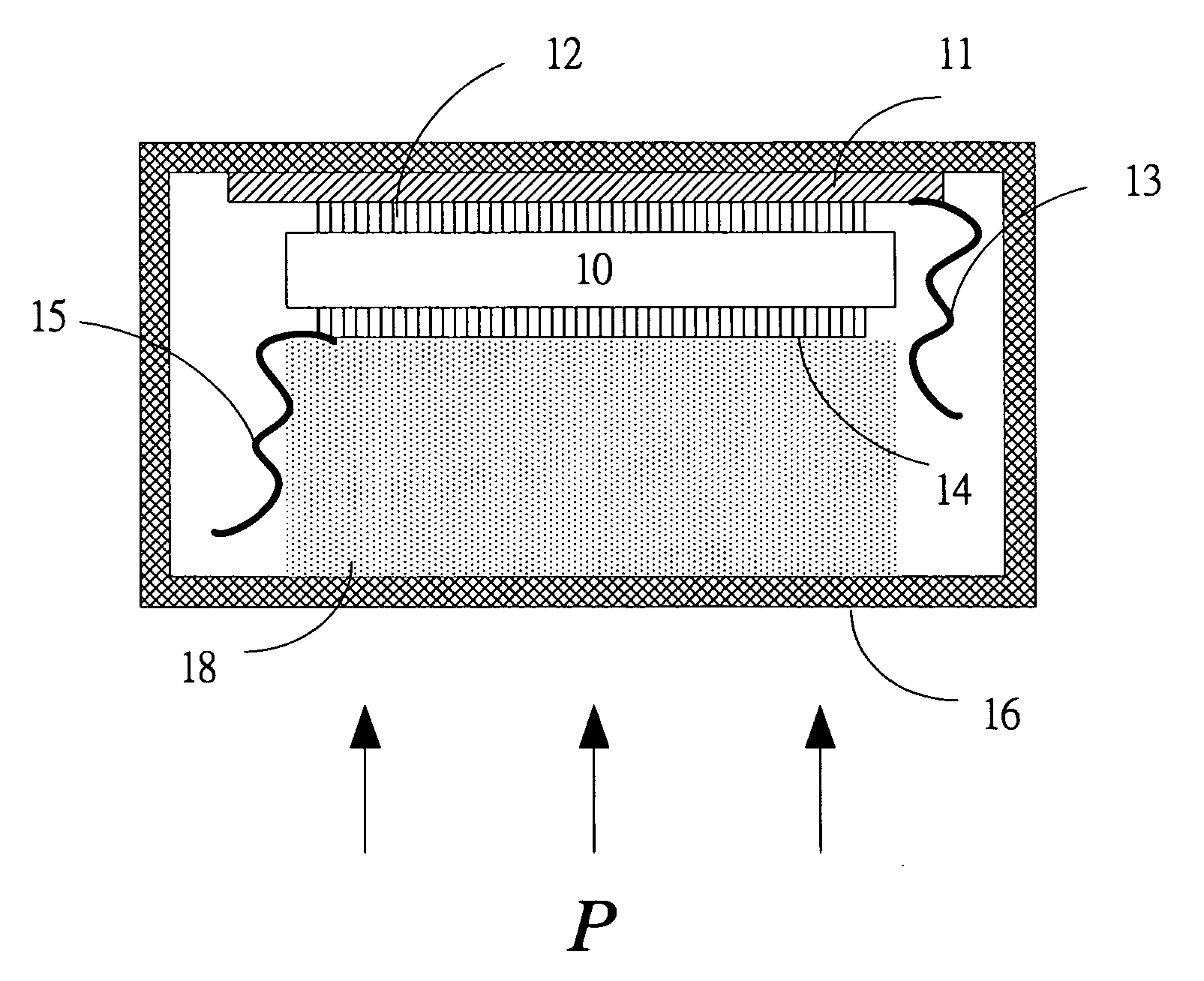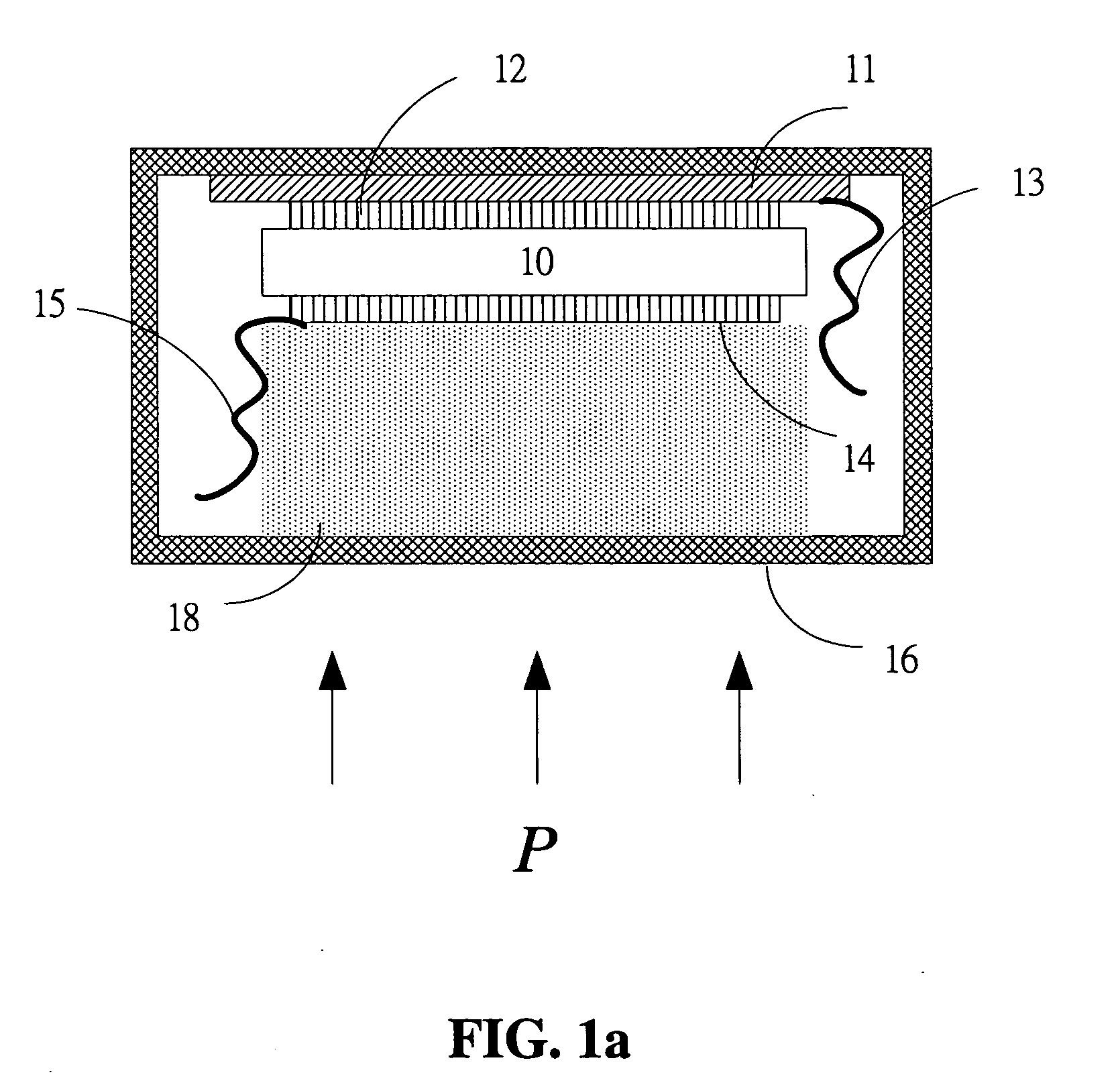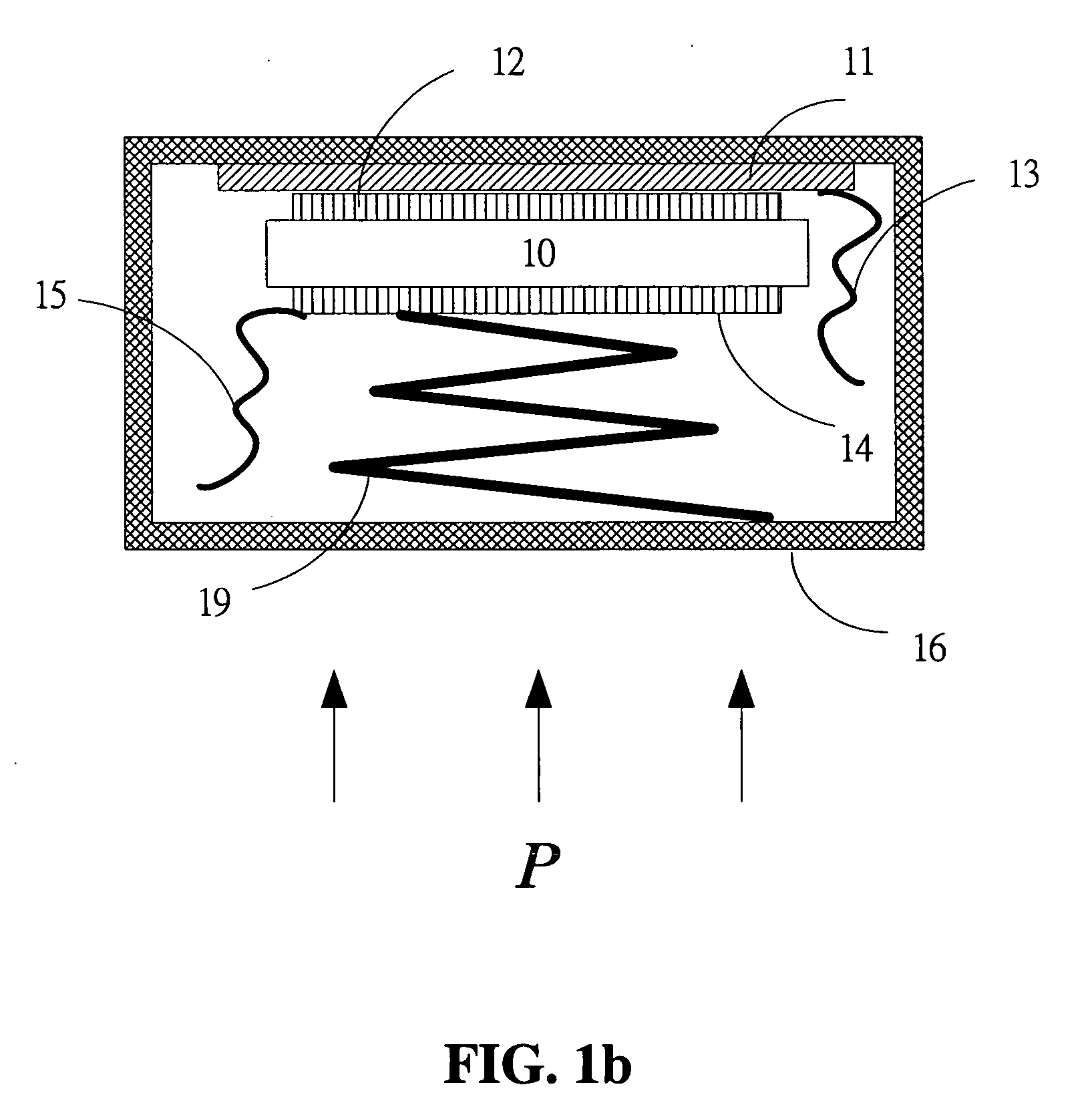High-fidelity piezoelectric contact-type microphone structure
a piezoelectric contact and microphone technology, applied in the field of piezoelectric contact-type microphone structure, can solve the problems of significant high-frequency distortion and inability to adjust to a noisy environment. achieve the effect of improving the structure of piezoelectric contact-type microphones and preventing distortion
- Summary
- Abstract
- Description
- Claims
- Application Information
AI Technical Summary
Benefits of technology
Problems solved by technology
Method used
Image
Examples
first embodiment
[0024] A piezoelectric contact-microphone according to the present invention mainly contains a piezoelectric element, and a main body. FIGS. 3a and 3b are schematic diagrams showing a top and side views of a piezoelectric element respectively according to the present invention. As illustrated, a flat piezoelectric element 30, usually made of ceramic or quartz, has a round shape. There is actually no specific requirement on the shape of the piezoelectric element 30. Most of the time, a shape is chosen to conform to that of the main body (e.g., a round piezoelectric element for a cylindrical main body). The piezoelectric element 30 is also chosen to have a specific diameter (e.g., 8 mm in the present embodiment) to have a better sense of the pressure P. The top and bottom side of the piezoelectric element 30 are plated with metallic film 32 and 34 respectively, which in general cover almost the entire surfaces of the two sides of the piezoelectric element 30. Metallic films 32 and 34 ...
second embodiment
[0028] In order to further reduce the low frequency resonance, the main body 31 could be configured to have at least a through opening 33 on its cylindrical body. There is no specific requirement either on the shape or position of the opening 33, as illustrated in FIGS. 3c and 3d. The shape of the opening 33 could be a circle, rectangle, or other geometric shape. The opening 33 could be located on the side or along the rim of the open end of the main body 31. Please note that the opening 33 is optional. In addition to the opening 33, the present invention as illustrated in FIG. 3e has a rigid seat 39 positioned between the main body 31 and the positioning member 38. Again, there is no specific requirement on the form factor of the seat 39. However, its dimension is usually such that it could accommodate the open end of the main body 31. The material used to make the seat 39, metallic or non-metallic, is of no significance. The most important requirement to the seat 39 is that it pos...
third embodiment
[0029]FIG. 3f is a schematic diagram showing a side view of a piezoelectric contact-type microphone according to the present invention. The present embodiment has a structure very similar to the previous embodiments. The major differences lie in that the main body 31 is made of a non-metallic material, and a metallic plate 37 is positioned between the metallic film 34 and the inner side of the main body 31's closed end. A conducting wire 35 is soldered to the metallic plate 37 or the metallic film 34, as one of the electrodes of the piezoelectric element 30. The conducting wire 35 and the conducting wire 36 (as the other electrode) are then connected to the amplification circuit on the circuit board (not shown). The present embodiment could also have those implementation variations as mentioned above. For example, the main body 31 could have at least a through opening 33 to reduce low-frequency resonance, the seat 39 could be omitted, etc.
PUM
 Login to View More
Login to View More Abstract
Description
Claims
Application Information
 Login to View More
Login to View More - R&D
- Intellectual Property
- Life Sciences
- Materials
- Tech Scout
- Unparalleled Data Quality
- Higher Quality Content
- 60% Fewer Hallucinations
Browse by: Latest US Patents, China's latest patents, Technical Efficacy Thesaurus, Application Domain, Technology Topic, Popular Technical Reports.
© 2025 PatSnap. All rights reserved.Legal|Privacy policy|Modern Slavery Act Transparency Statement|Sitemap|About US| Contact US: help@patsnap.com



